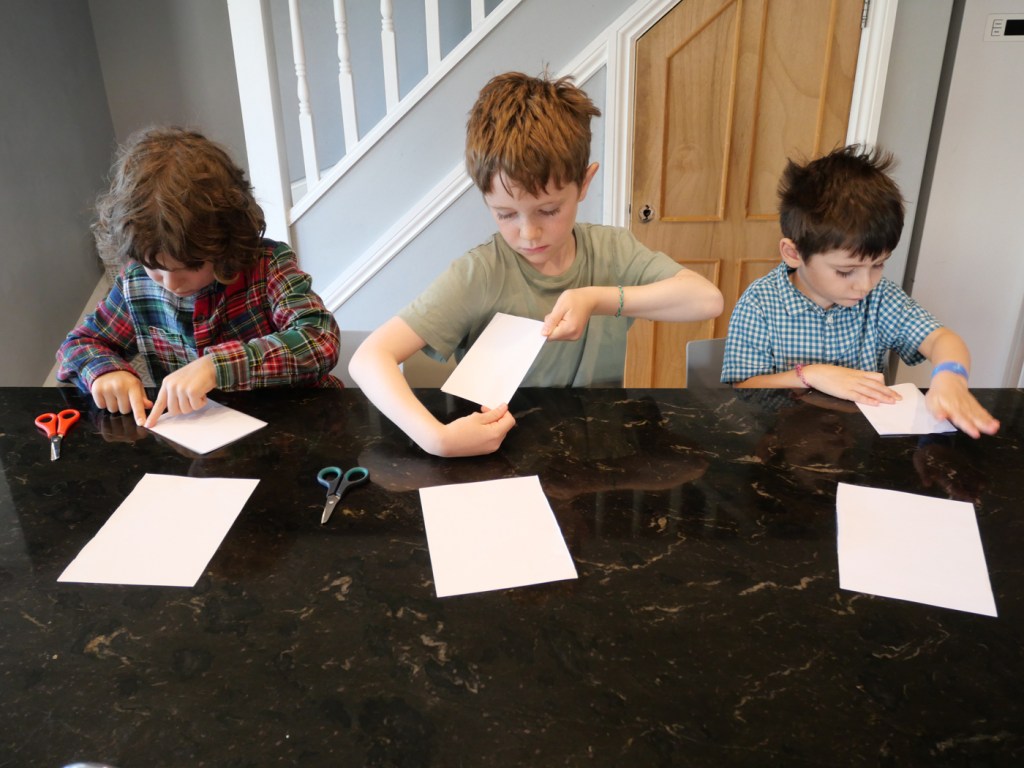It was Cian’s choice of activity for the first day of our summer holidays. He asked to learn about the life cycle of bumble bees, but having just learnt about the life cycle of a honey bee, there wasn’t a huge amount of difference. Instead he decided to look at the anatomy of a bumble bee.
Resources
- Pencil
- Paper
- Scissors
- Scrap paper
- Step by step tutorial on drawing a bumble bee by Cartooning Club How To Draw
Drawing a bumble bee
All three of our boys love drawing and illustrating, but Cici (4 years old) spends hours every day drawing animals. His request for today was to draw a “real looking” bumble bee.
They started off by cutting the A4 paper in half. I love the satisfied look in the final picture, when Cics realised he’d finished cutting before his big brothers (ages 7 and 9).









They then folded, and cut, one half in half again, to get a quarter.






Then one more fold in half to get an eighth. Aren’t concentrating faces the best!









The first step was to draw a faint guide line down the middle of the page, to centre the bee’s thorax and abdomen.
NB. Unless mentioned otherwise, the individual pictures of the drawing process are of Cian. The group pictures are L-R: Cian, Ioan, Finny.






Next, they drew the head and some guide lines for the wings.















The shape of the fore wing was sketched in.






The rear wing and legs were added.









Adding shading. L-R: Cian, Ioan, Finny.












Darkening the shading on the thorax.






Adding little hairs around the body.






Showing the three distinct parts of the bumble bee’s legs.






Faint shading and vein formation on wings.






The finished drawings of the bumble bee, ready for some yellow shading.



The artists with their work.









Anatomy of a bumble bee
Cici started off with singing a version of ‘head, shoulders, knees and toes’ to remember the three main body parts: head, thorax abdomen.
Cics then found those parts on his bumble bee sketch.















Ioan showed us the three different parts of the bumble bee’s legs: tibia, metatarsus, tarsus.









Finny showed us the fore wing and rear wing.






Cian then kept revisiting the anatomy of the bumble bee and adding the labels on the three bees.












DfES Early Learning Goals (2017)
Physical development
ELG 04 – Moving and handling:
Children show good control and co-ordination in large and small movements. They handle equipment and tools effectively, including pencils for writing.
ELG 14 – The world:
Children know about similarities and differences in relation to places, objects, materials and living things. They talk about the features of their own immediate environment and how environments might vary from one another. They make observations of animals and plants and explain why some things occur, and talk about changes.
ELG 15 – Technology:
Children recognise that a range of technology is used in places such as homes and schools. They select and use technology for particular purposes.


















